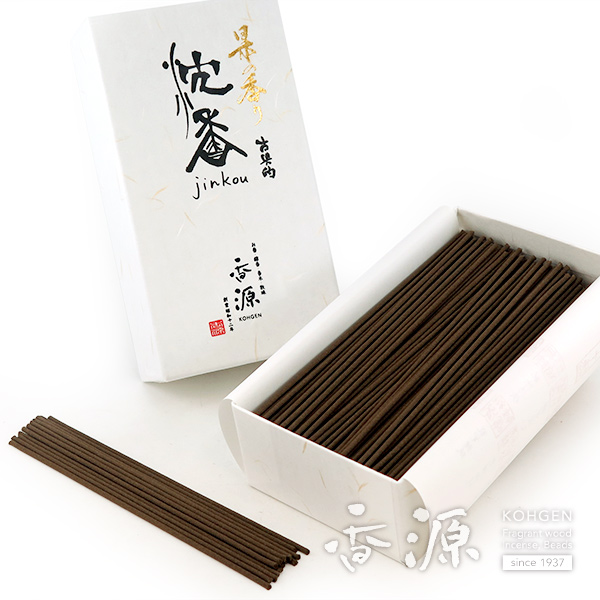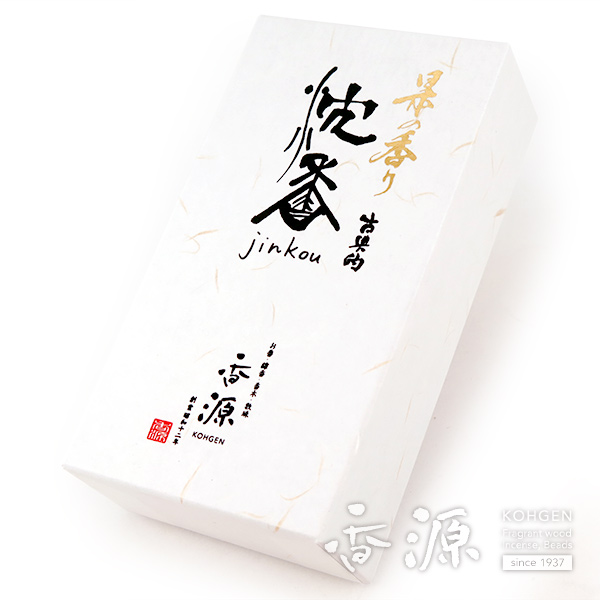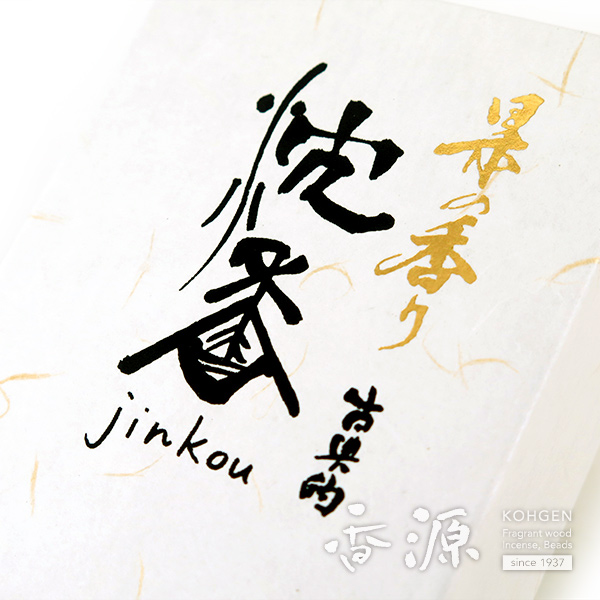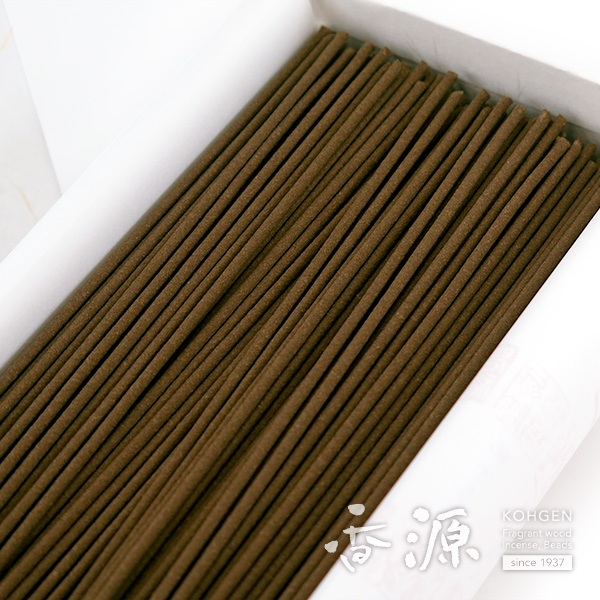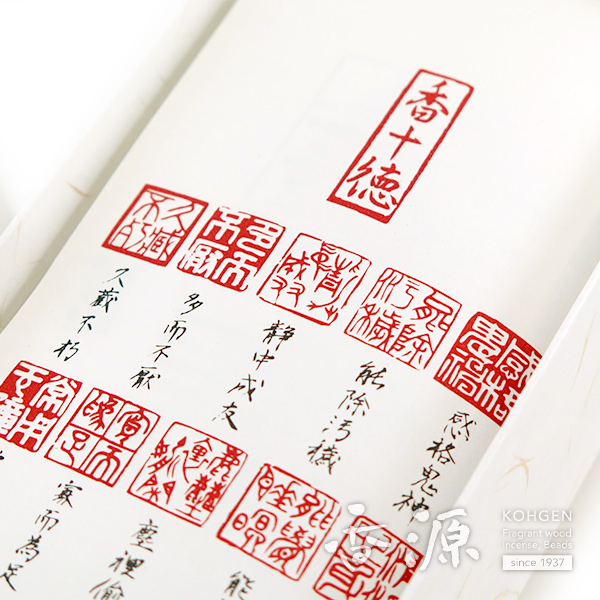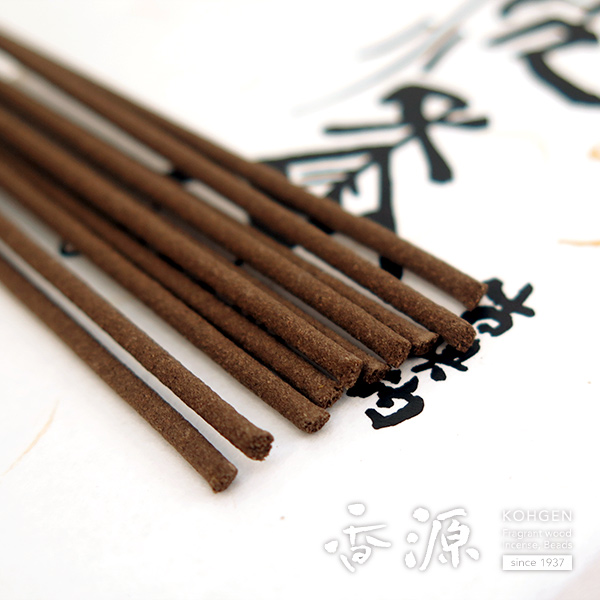Overseas Shipping > Choose by maker > Kohgen > Daily Incense - Fragrant Woods type
Overseas Shipping > Choose by Fragrance - Fragrant Woods type > Agarwood > Traditional - Agarwood
Kohgen Original Incense Traditional Agarwood, large box
Kohgen Original Incense Traditional Agarwood, large box
Koghen Original Incense that contains lavish amounts of agarwood
Koghen Original Incense that contains lavish amounts of agarwood
Our store original incense sticks.
Fragrance: traditional fragrance of agarwood.
This incense has been created for its pleasant, relaxing fragrance to be used also at home.
Indonesian agarwood accounts for 20% of the compounds in this mix.
Besides the main ingredient, which is agarwood, this incense also contains sandalwood and borneo camphor. It also includes clove, Chinese nardostachys root and rhizome, patchouli, benzoin resin, Ling Xiang Cao herb amd the powdered operculum of a rock shell.
At first the sharp scent of borneo camphor stands out, but while it burns its aroma matures into a tranquil and calming fragrance.
At the beginning the agarwood aroma may seem to be weak, but the sweet fragrance of it will stand out more strongly as it burns.
Even though there are many traditional herbs and incense raw ingredients blended in this mix, the fragrance of this incense is perfect for younger generation as well.
While creating this incense we also wanted the design of the package to be meaningful.
Chinese characters that mean agarwood (jinkou), are written in ancient calligraphic style and even though there had been an evolution in hieroglyphic characters style, the meaning of those ancient Chinese characters is even more understandable than of present ones.
We would like to recommend you to admire the fragrance of agarwood along with the calligraphy on the box as we think it is the article of unique beauty.
An explanation of the "agarwood"`s Chinese characters
Jin
The radical on the left represents a cow. In ancient China cattle were often used as a sacrifice. In Japan, after war, instead of beheading a military commander, cow was used as a substitute. In China cutting off the ear of a cow is the symbol of taking something very important.
The whole character means "to sink" and it reffers to the high quality agarwood which sinks in water.
Kou
The upper radical refers to the barnyard millet, a grain that is cultivated in Japan.
The lower part of character represents a mouth. When those radicals are combined you can read from the character that when grains are put into the mouth there will be a delicious, full of fragrant taste.
As a digression I would like to mention that Japanese word “kaori” which means fragrance, can be written with two different Chinese characters: “香” and “薫” . Writing by a “香” means that fragrance can be tasted by mouth or can be sensed by nose. When written by “薫” character it has other connotation and means that the fragrance can be sensed by the skin and its flavor appeals to all five senses.
We offer two sizes of this product: medium (50 g) and large box (100 g).
Procut details:
number of sticks: 300
weight: 100 g
package size: 14.5 cm x 8 cm x 4 cm


